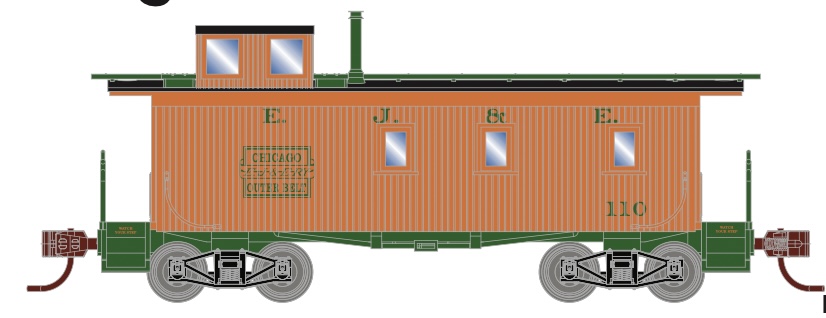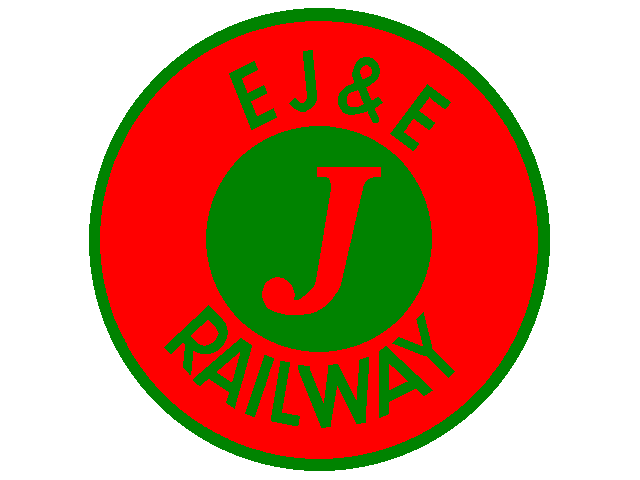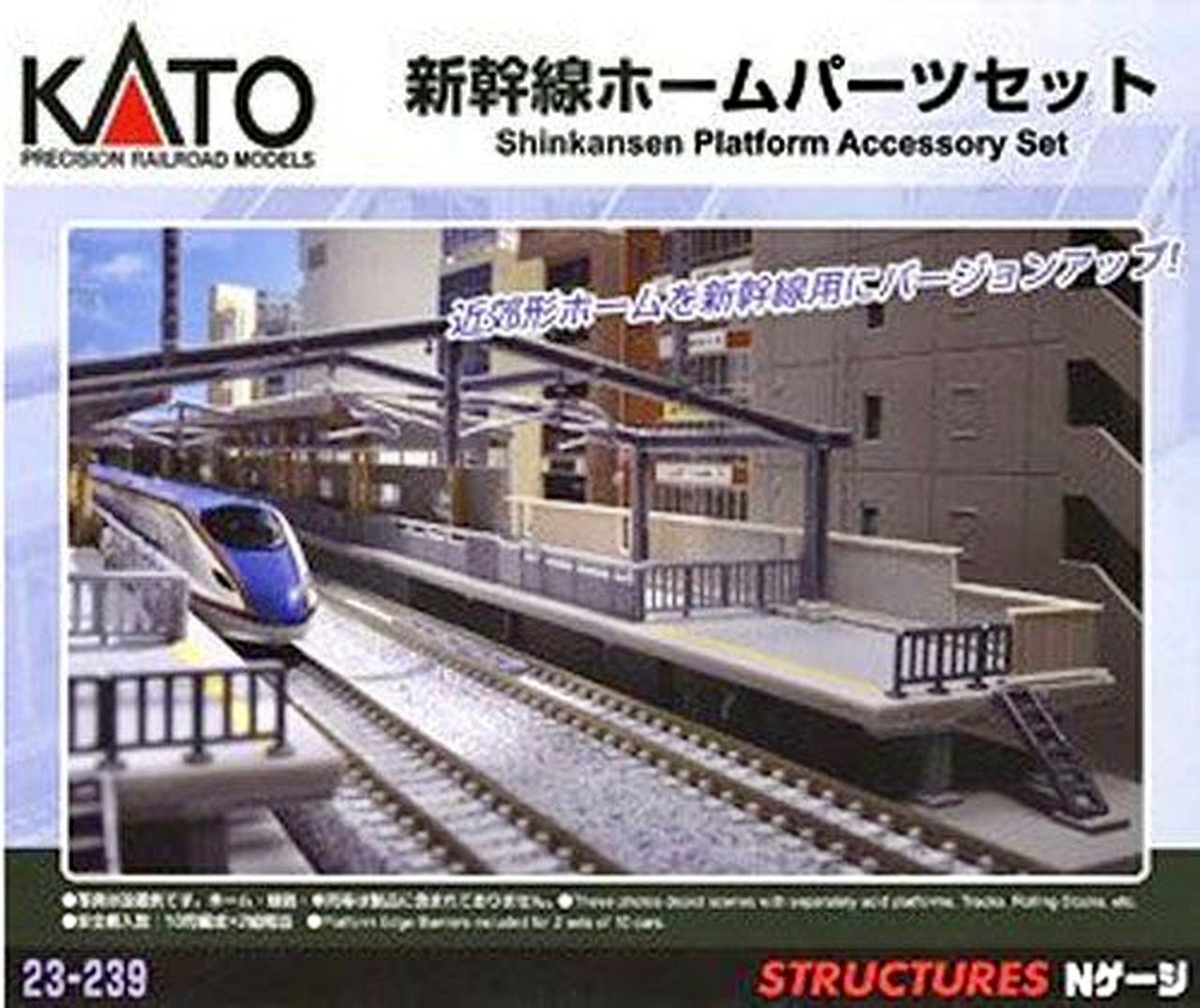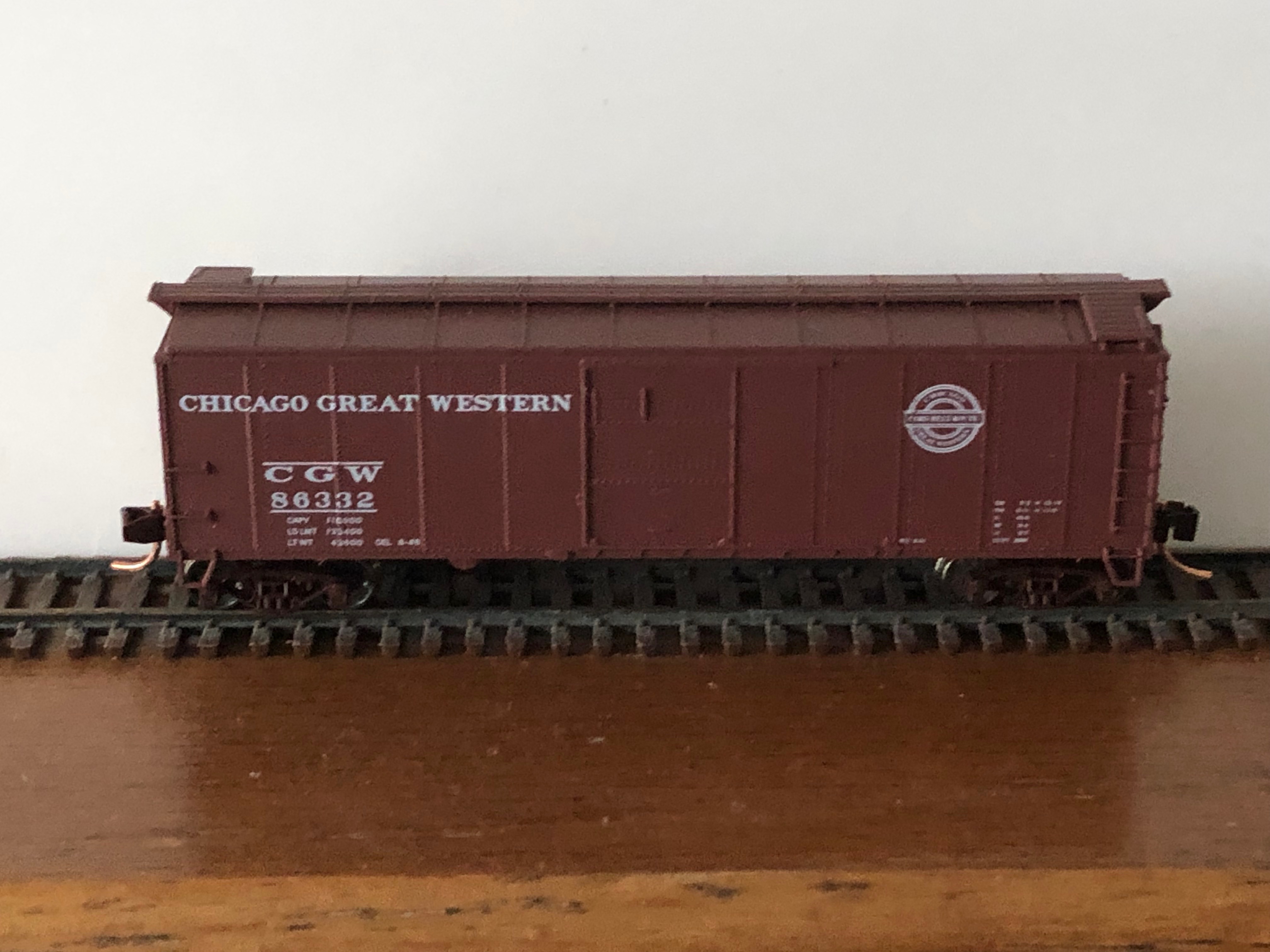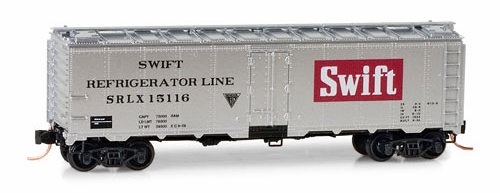Model Information: Originally manufactured by MDC Roundhouse, this tooling was later acquired by Athearn. This model Features:
Based on Model Die Casting tooling;
A perfect match for our Old Time 2-8-0 steam locomotive;
Clear window glazing;
Molded truss rods with turnbuckles;
Molded plastic underframe with brake cylinder;
Screw mounted trucks for accurate tracking;
Truck mounted magnetically operated knuckle couplers;
Plastic wheels. The MDC version carries Rapido couplers.
Prototype History: The origins of the railroad caboose appear to date back to the 1840s when Nat Williams, a conductor of the Auburn & Syracuse Railroad (a later affiliate of the New York Central) became fed up with cramped and uncomfortable quarters to do paperwork (a common job of the conductor, whose responsibility is general oversight and control of a train, passenger or freight), which was usually done in either a free space of a passenger car or combine/baggage car. To fix this problem, Williams found an unused boxcar and using a simple box and barrel, as a seat and desk, set up shop in the car to do his duties. Not only did he find out he had plenty of room to work but also figured that he could use the unused space to store tools (flags, lanterns, spare parts, etc.) and other essentials to have on board whenever needed (such things become commonly stored on the caboose).
Perhaps the most striking feature ever applied to the railroad caboose was its cupola. According to the story, conductor T.B. Watson of the Chicago & North Western in the 1860s reportedly used a hole in a boxcar’s roof (which he was using as a caboose) to get a better vantage point of the train ahead. It is said that Watson was amazed by the view afforded from the position being able to not only see the train ahead but also from all sides, and to the rear as well. He apparently convinced C&NW shop forces to construct a type of open observation box onto an existing singe-level caboose with windows all around where one could sit and view their surroundings. The rest, as they say, is history and the common cupola was born.
Perhaps the most striking feature ever applied to the railroad caboose was its cupola. According to the story, conductor T.B. Watson of the Chicago & North Western in the 1860s reportedly used a hole in a boxcar’s roof (which he was using as a caboose) to get a better vantage point of the train ahead. It is said that Watson was amazed by the view afforded from the position being able to not only see the train ahead but also from all sides, and to the rear as well. He apparently convinced C&NW shop forces to construct a type of open observation box onto an existing singe-level caboose with windows all around where one could sit and view their surroundings. The rest, as they say, is history and the common cupola was born.
Road Name History: The EJ&E dates from 1888. For most of its history, it was owned by US Steel whose Gary Works is near the east end of the line. Another company owns the mill now.
The EJ&E traces a wide arc around the Chicago area between 30 and 40 miles from the city center from Waukegan on the north, around Walker and Joliet, then east as far as Porter, Indiana. Because of this, the EJ&E was known for years as “The Chicago Outer Belt.” It also had the nickname, “The J”.
EJ&E’s two biggest missions have been moving steel and acting as a transfer road for all of Chicago’s Class 1’s and shortlines. As a result, the line was heavily trafficked with 100 locomotives required to serve just 230 route miles. In addition, EJ&E had over 10,000 freight cars, a huge fleet for a line that size.
In the early diesel days, EJ&E stuck mostly with Baldwin and EMD with a few Alco RS2’s thrown in. The J had more Baldwin center cab transfer engines (DT 6-6-2000) than anyone else, in fact more than just about everyone else combined. Ballasted EMD SD7’s painted in green over orange were also used in transfer service. EMD NW2’s were the primary switchers. In 1970, the Baldwins were replaced by EMD SD38-2’s, delivered with dual controls to they could just as easily run long hood forward. By that time, EJ&E had gone to solid orange with silver trucks and fuel tanks with various striping and logo placement variations over the years. They would also toy with gold and yellow and green and yellow schemes.
In 2009 the Elgin Joliet & Eastern was acquired by Canadian National in order to link their former Wisconsin Central, Illinois Central, Chicago Central & Pacific, and Grand Trunk Western lines. These lines approached the city from different directions and had required trackage rights and terminal roads to reach each other so acquiring the EJ&E was a logical move.
The EJ&E traces a wide arc around the Chicago area between 30 and 40 miles from the city center from Waukegan on the north, around Walker and Joliet, then east as far as Porter, Indiana. Because of this, the EJ&E was known for years as “The Chicago Outer Belt.” It also had the nickname, “The J”.
EJ&E’s two biggest missions have been moving steel and acting as a transfer road for all of Chicago’s Class 1’s and shortlines. As a result, the line was heavily trafficked with 100 locomotives required to serve just 230 route miles. In addition, EJ&E had over 10,000 freight cars, a huge fleet for a line that size.
In the early diesel days, EJ&E stuck mostly with Baldwin and EMD with a few Alco RS2’s thrown in. The J had more Baldwin center cab transfer engines (DT 6-6-2000) than anyone else, in fact more than just about everyone else combined. Ballasted EMD SD7’s painted in green over orange were also used in transfer service. EMD NW2’s were the primary switchers. In 1970, the Baldwins were replaced by EMD SD38-2’s, delivered with dual controls to they could just as easily run long hood forward. By that time, EJ&E had gone to solid orange with silver trucks and fuel tanks with various striping and logo placement variations over the years. They would also toy with gold and yellow and green and yellow schemes.
In 2009 the Elgin Joliet & Eastern was acquired by Canadian National in order to link their former Wisconsin Central, Illinois Central, Chicago Central & Pacific, and Grand Trunk Western lines. These lines approached the city from different directions and had required trackage rights and terminal roads to reach each other so acquiring the EJ&E was a logical move.
Brand/Importer Information: Athearn's history began in 1938, when its founder-to-be, Irvin Athearn, started an elaborate O scale layout in his mother's house. After placing an ad selling the layout, and receiving much response to it, Irv decided that selling model railroads would be a good living. He sold train products out of his mother's house through most of the 1940s. After becoming a full-time retailer in 1946, Irv opened a separate facility in Hawthorne, California in 1948, and that same year he branched into HO scale models for the first time.
Athearn acquired the Globe Models product line and improved upon it, introducing a comprehensive array of locomotive, passenger and freight car models. Improvements included all-wheel drive and electrical contact. One innovation was the "Hi-Fi" drive mechanism, employing small rubber bands to transfer motion from the motor spindle to the axles. Another was the double-ended ring magnet motor, which permitted easy connection to all-wheel-drive assemblies. Athearn was also able to incorporate flywheels into double-ended drives.
The company produced a model of the Boston & Maine P4 class Pacific steam locomotive which incorporated a cast zinc alloy base and thermoplastic resin superstructure. It had a worm drive and all power pickup was through the bipolar trucks that carried the tender. This item was discontinued after the Wilson motor was no longer available, and was not redesigned for a more technologically advanced motor.
Athearn's car fleet included shorter-than-scale interpretations of passenger cars of Southern Pacific and Atchison, Topeka & Santa Fe Railroad prototypes. The company also offered a variety of scale-length freight cars with sprung and equalized trucks. The cars could be obtained in simple kit form, or ready-to-run in windowed display boxes. The comprehensive scope of the product line contributed to the popularity of HO as a model railroad scale, due to the ready availability of items and their low cost.
Irv Athearn died in 1991. New owners took control in 1994, but continued to follow Athearn's commitment to high-quality products at reasonable prices. Athearn was bought in 2004 by Horizon Hobby. Athearn was then moved from its facility in Compton to a new facility in Carson, California. In mid-2009, all remaining US production was moved to China and warehousing moved to parent Horizon Hobby. Sales and product development was relocated to a smaller facility in Long Beach, California.
Read more on Wikipedia and Athearn website.
Athearn acquired the Globe Models product line and improved upon it, introducing a comprehensive array of locomotive, passenger and freight car models. Improvements included all-wheel drive and electrical contact. One innovation was the "Hi-Fi" drive mechanism, employing small rubber bands to transfer motion from the motor spindle to the axles. Another was the double-ended ring magnet motor, which permitted easy connection to all-wheel-drive assemblies. Athearn was also able to incorporate flywheels into double-ended drives.
The company produced a model of the Boston & Maine P4 class Pacific steam locomotive which incorporated a cast zinc alloy base and thermoplastic resin superstructure. It had a worm drive and all power pickup was through the bipolar trucks that carried the tender. This item was discontinued after the Wilson motor was no longer available, and was not redesigned for a more technologically advanced motor.
Athearn's car fleet included shorter-than-scale interpretations of passenger cars of Southern Pacific and Atchison, Topeka & Santa Fe Railroad prototypes. The company also offered a variety of scale-length freight cars with sprung and equalized trucks. The cars could be obtained in simple kit form, or ready-to-run in windowed display boxes. The comprehensive scope of the product line contributed to the popularity of HO as a model railroad scale, due to the ready availability of items and their low cost.
Irv Athearn died in 1991. New owners took control in 1994, but continued to follow Athearn's commitment to high-quality products at reasonable prices. Athearn was bought in 2004 by Horizon Hobby. Athearn was then moved from its facility in Compton to a new facility in Carson, California. In mid-2009, all remaining US production was moved to China and warehousing moved to parent Horizon Hobby. Sales and product development was relocated to a smaller facility in Long Beach, California.
Read more on Wikipedia and Athearn website.
Item created by: CNW400 on 2021-08-27 09:51:12
If you see errors or missing data in this entry, please feel free to log in and edit it. Anyone with a Gmail account can log in instantly.
If you see errors or missing data in this entry, please feel free to log in and edit it. Anyone with a Gmail account can log in instantly.


